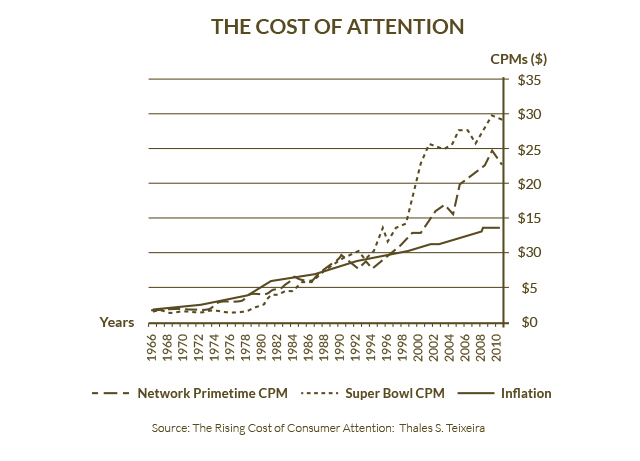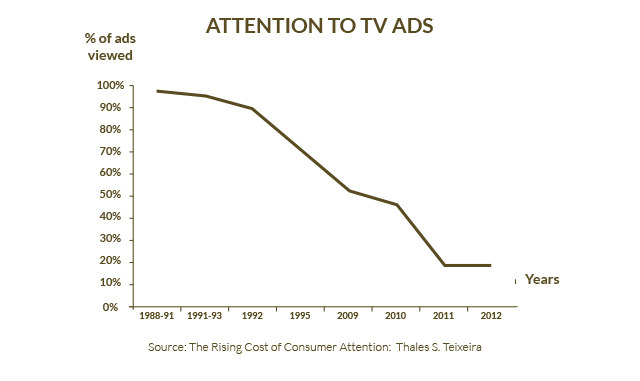 Attention is either earned or paid for. Whether you pay for advertising or not you still buy your audience’s attention every day. You may not pay in dollars and cents, but either way there is a cost attached to getting people to notice or engage.
Attention is either earned or paid for. Whether you pay for advertising or not you still buy your audience’s attention every day. You may not pay in dollars and cents, but either way there is a cost attached to getting people to notice or engage.
The cost of paid attention (in the form of TV ads) has been rising faster than inflation since the mid-1990s.

The flip side is the value of that attention is decreasing. More channels, more ads and more choices have translated into less trust, lack of belief and declining motivation to pay attention. On top of that how we now consume media, on demand and on our own terms via mobile devices has changed both our expectations and behaviour. But apart from making adverts shorter and shifting to different platforms to tell our stories we’re often still guilty of marketing in that 1990s ‘here we are, this is what we’ve got for you’ way. We’re still using tactics that worked on a very different customer. They are not working now.

It’s not just the economics and the media that have changed—it’s your customers. Increasingly what matters to people is not how you show up, but why you showed up. The biggest spending consumers aren’t simply shopping for stuff any more, they are shopping for ways to change how they feel, to express themselves and to find meaning. They no longer want information, or even experiences, they expect context—an understanding of what matters to them.
You might not have control over the increasing cost of reaching people or their decreasing attention spans, but you do have control over what happens before, after and in the moment that you meet your customers where they are. The future success of your business is less likely to be shaped by all the attention money can buy and much more by your intention—which is free to choose.
Image by Andy.
 Attention is either earned or paid for. Whether you pay for advertising or not you still buy your audience’s attention every day. You may not pay in dollars and cents, but either way there is a cost attached to getting people to notice or engage.
Attention is either earned or paid for. Whether you pay for advertising or not you still buy your audience’s attention every day. You may not pay in dollars and cents, but either way there is a cost attached to getting people to notice or engage.
